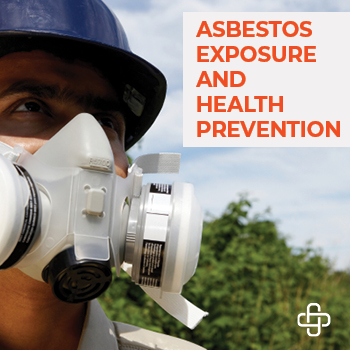 Are your employees at risk for asbestos exposure? While there’s no cure for asbestos related illness and disease, there are simple preventative measures you can take to protect workers and minimize their risk.
Are your employees at risk for asbestos exposure? While there’s no cure for asbestos related illness and disease, there are simple preventative measures you can take to protect workers and minimize their risk.
Learn what you can do to minimize asbestos related illness and disease for the long haul.
What’s Asbestos?
Typically used as a building material, asbestos is commonly found in commercial buildings and the structure of houses erected before 1980. Asbestos was, and is used for piping, textured paints, caulks, ceiling tiles, vinyl flooring, and insulation.
Resembling tiny fibers that are released in the air, asbestos exposure occurs when an individual breaths it in and gets trapped in the lungs. These fibers can cause scarring, and over time, respiratory diseases, including mesothelioma cancer.
Mesothelioma is a very dangerous disease, primarily for two reasons:
- It can take 10-50 years to develop symptoms and go untreated;
- Earlier symptoms are often misdiagnosed as the flu, or pneumonia. Misdiagnosed and the delay of treatment can cause irreplaceable damage. By the time the disease is correctly identified, the cancer may have spread to a stage 3.
Are My Employees At Risk for Asbestos?
Who’s at risk? What industries are most affected?
The most at risk workers are those who are exposed to asbestos on a regular basis, including:
- Construction workers. Those workers in the construction industry are most at risk for asbestos, with demolition crews and renovators being among the most at-risk in this group. According to the National Institute for Occupational Safety and Health, 25 percent of people who die from asbestos worked in the construction field.
- Industrial workers. Trade laborers, foremen, machinery operators, mechanics and chemical workers who are exposed to textiles, fireproofing and insulation are at a high risk for flying asbestos fibers.
- Power plant workers. The most common sources of asbestos exposure are found in heat-resistant products. Power plant workers that perform pipe insulation, fireproofing spray and (in particular) cutting asbestos pipes puts employees at risk on a consistent basis.
Other top industries affected by asbestos and mesothelioma deaths include:
- Agricultural
- Hospitals
- General government
- ship and boat building
- Railroads
- Carpenters
- Cement plant workers
- Chemical plant workers
- Auto mechanics
How Can I Minimize Their Risk of Being Exposed?
Despite the risk, employees are not at the mercy of asbestos exposure – employers can help to prevent it from taking place with an occupational health program!
Provide your employees with OSHA mandated physical exams to accurately identify an employee’s risk and potential for developing asbestos disease, and improve the health and safety of your workforce.

Heather lives and writes by the motto, “No coffee, no workee,” and is passionate about helping others live a happier and healthier life. When she’s not writing away, you can find her playing basketball with her two sons, planning her next getaway “somewhere tropical” or trying out a new recipe with chocolate as the main ingredient.
Find out more about our Injury Case Management services or our Occupational Health Programs.










